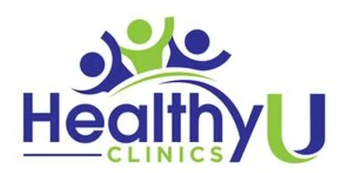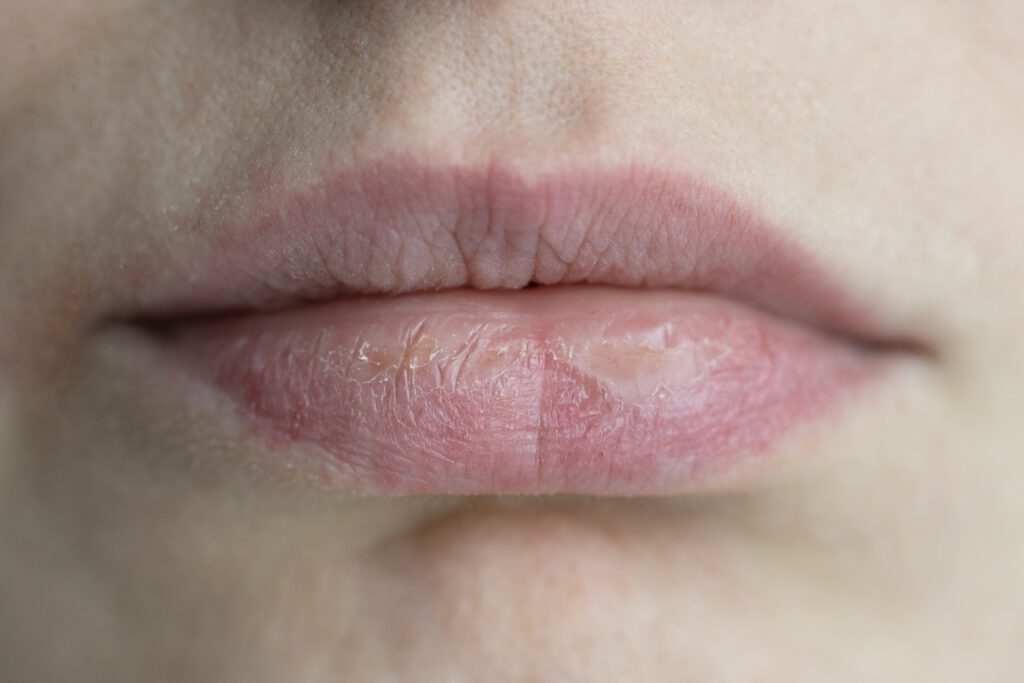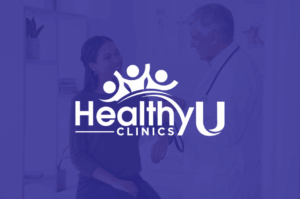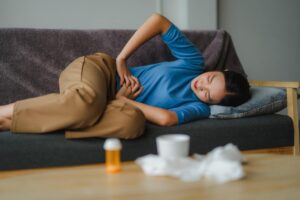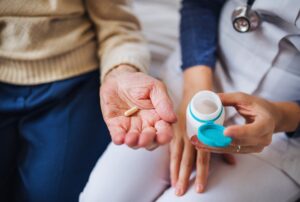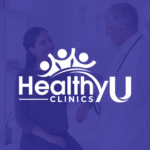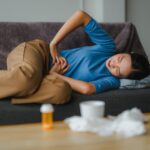It can be tricky to tell whether that dry patch on your lips is simply chapped skin or the start of a cold sore. Both conditions affect the lips, but they have very different causes and treatments.
Chapped lips are usually a response to environmental factors like wind, dry air, or dehydration. Cold sores, on the other hand, are caused by the herpes simplex virus (HSV-1), which is contagious and may require antiviral treatment.
At HealthyU Clinics, our providers often hear patients ask, “Do I have a cold sore or chapped lips?”
This confusion is common, but with the right information, you can confidently recognize early signs, seek treatment when necessary, and protect your overall health.
Table of Contents
Why Understanding Matters
Your lips are some of the most delicate skin on your body. Because they lack oil glands and are constantly exposed to the environment, they’re prone to dryness, irritation, and infection.
The way you care for dry or cracked lips is very different from how you treat lip blisters linked to a contagious cold sore. If you’re unsure whether you’re dealing with a cold sore vs. dry lips, looking at symptoms and triggers is the best way to get clarity.
What Are Chapped Lips?
Chapped lips, also called cheilitis, occur when the lips lose moisture and become dry, cracked, or peeling. Symptoms may include redness, soreness, and sometimes bleeding if the skin splits. They are uncomfortable but not contagious, and can usually be relieved with hydration and protective lip balms.
What Are Cold Sores?
Cold sores (fever blisters) are caused by herpes simplex virus type 1 (HSV-1). They appear as small, fluid-filled blisters that often cluster on or around the lips. The blisters may burst, ooze, and crust over within a few days. Unlike chapped lips, cold sores are contagious and can spread through close contact.
Causes & Triggers
Chapped Lips Causes
Several everyday factors contribute to chapped lips, including:
- Weather exposure: Cold, windy, or dry air strips natural moisture from the lips.
- Dehydration: Not drinking enough water leads to dryness throughout the body, including the lips.
- Licking lips: Saliva evaporates quickly, leaving lips drier than before.
- Irritants in products: Certain cosmetics, toothpaste, or flavored balms may cause irritation.
- Vitamin deficiencies: Low levels of B vitamins or iron can contribute to cracked corners of the mouth.
- Medications: Some drugs (like isotretinoin for acne) increase dryness as a side effect.
Cold Sore Triggers
Cold sores tend to recur due to reactivation of the HSV-1 virus. Common triggers include:
- Stress: Emotional or physical stress weakens the immune system, allowing the virus to flare.
- Illness or fever: Cold sores often appear when your body is fighting another infection.
- Sun exposure: Ultraviolet light can trigger an outbreak on sunburned lips.
- Hormonal changes: Menstrual cycles or pregnancy can prompt flare-ups.
- Fatigue: Lack of rest lowers immunity, increasing risk of outbreaks.
- Weakened immune system: People with chronic illness or immunosuppression may see more frequent recurrences.
Symptoms & Stages
Signs of Chapped Lips
Chapped lips are usually straightforward, with visible dryness and discomfort. Common signs include:
- Dryness and flaking: Lips feel rough and appear scaly.
- Cracks or splits: Painful fissures may form, sometimes leading to bleeding.
- Redness and irritation: Lips may look inflamed or feel sore.
- Burning or stinging: Especially noticeable when eating salty or acidic foods.
- Peeling skin: Layers of skin may lift and shed from the lips.
Signs of Cold Sores
Cold sores develop in stages, making them easier to identify compared to chapped lips.
Typical signs include:
- Tingling or itching: A burning sensation on the lip often precedes the sore.
- Small blisters: Fluid-filled bumps form in clusters along the lip line.
- Oozing and crusting: Blisters burst, releasing fluid before scabbing over.
- Pain and swelling: Lips feel sore and tender during flare-ups.
- Healing cycle: Outbreaks typically resolve within 7–10 days.
Visual & Sensory Differences
The key to telling the difference lies in how each condition looks and feels:
Chapped lips: Dry, flat, and flaky; no blisters or clustered lesions. Discomfort worsens with dryness or exposure.
Cold sores: Raised blisters, often painful and preceded by tingling. Outbreak follows a cycle: tingling → blister → scab → healed.
Diagnosis & When To See A Doctor
Self-Diagnosis Tips
While only a healthcare provider can give a definitive diagnosis, you can often distinguish between the two by noting:
Onset — Did your lips suddenly dry out after cold weather or dehydration? Likely chapped lips. Did you feel tingling before blisters appeared? Likely a cold sore.
Appearance — Is it flat, dry, and cracked? That points to chapping. Are there clustered blisters? That points to cold sores.
Duration — Dry lips often improve with hydration and balm in a few days. Cold sores last 7–10 days, regardless of moisturizers.
When to Seek Medical Advice
Sometimes, self-care isn’t enough. Seek medical evaluation if you experience:
- Severe pain or swelling: May indicate infection or another underlying issue.
- Frequent recurrences: More than 6 cold sore outbreaks a year may require prescription antivirals.
- Non-healing sores: Lip lesions that don’t heal within two weeks should be examined.
- Spreading beyond lips: Cold sores that spread inside the mouth, eyes, or skin need prompt attention.
- Compromised immunity: People with weakened immune systems should consult a doctor at the first sign of cold sores.
For ongoing care, you can schedule a visit with a HealthyU primary care provider to confirm the cause and discuss treatment options.
Treatments & Home Remedies
Chapped Lips
Most cases of chapped lips improve quickly with consistent care. Helpful remedies include:
- Hydrating regularly: Drinking enough water restores overall skin moisture.
- Moisturizing balms: Use ointments with petrolatum, shea butter, or beeswax to lock in hydration.
- Avoid licking lips: Saliva dries quickly, worsening irritation.
- Humidifier use: Adds moisture to indoor air during dry months.
- Gentle exfoliation: Removing dead skin with a damp cloth once or twice a week helps lip balms absorb better.
- Protective SPF lip balm: Shields against sunburn and further damage.
Cold Sores
Cold sores require a different approach since they’re viral and contagious. Treatments include:
- Antiviral creams: Over-the-counter or prescription topical antivirals (like acyclovir) shorten healing time.
- Oral antivirals: Prescription medications such as valacyclovir or famciclovir may reduce outbreak severity.
- Cold compresses: Applying a cool cloth eases pain and swelling.
- Pain relievers: OTC ibuprofen or acetaminophen relieve discomfort.
- Avoid touching sores: Prevents spreading the virus to other parts of the body or others.
- Supportive care: Rest, stress management, and immune support help prevent recurrences
Prevention Strategies
Preventing Chapped Lips
Proactive care can keep lips smooth year-round:
- Use protective balms: Choose fragrance-free balms with SPF.
- Avoid harsh ingredients: Stay away from menthol, camphor, or cinnamon, which may irritate.
- Cover lips outdoors: Use scarves or masks in cold, windy weather.
Adopt a lip care routine: Moisturize before bed and after meals.
Reducing Cold Sore Risk
While HSV-1 remains in the body, outbreaks can be minimized:
- Manage stress: Relaxation techniques reduce one of the most common triggers.
- Prioritize sleep: A strong immune system lowers outbreak frequency.
- Avoid close contact during outbreaks: Prevents spreading to others.
- Recognize early signs: Start antiviral treatment at the first tingling sensation for best results.
Comparing Chapped Lips vs. Cold Sores
| Chapped Lips | Cold Sores | |
|---|---|---|
| Causes | Dry weather, dehydration, irritants, lip licking | Herpes simplex virus (HSV-1), reactivation from triggers |
| Symptoms | Dryness, cracks, peeling, soreness | Tingling, clustered blisters, oozing, crusting |
| Treatments | Hydration, balms, SPF, humidifier use | Antiviral creams or oral meds, pain relief, rest |
| Contagious? | No | Yes, spreads through close contact |
| When to See a Doctor | If lips don’t heal in 1–2 weeks, severe pain, or persistent cracks | Frequent outbreaks, spreading beyond lips, or non-healing sores |
Find a Doctor Near You at HealthyU Clinics
Understanding the difference between chapped lips vs. cold sores helps you take the right action for relief.
Chapped lips are usually caused by environmental factors or dehydration, while cold sores are viral and contagious. Recognizing early symptoms can help you treat the condition effectively—whether that means applying a protective balm or starting antiviral therapy.
If you’re unsure about your symptoms, it’s best to seek medical guidance. HealthyU Clinics offers compassionate, comprehensive care across Arizona and California, with providers who can evaluate your symptoms and recommend treatment tailored to your needs.
Take the next step toward relief with HealthyU Clinics.
Frequently Asked Questions
Can chapped lips look like a cold sore?
Yes, severe chapped lips may mimic the redness and soreness of a cold sore. The difference is that chapped lips don’t form fluid-filled blisters, while cold sores progress through a blister-and-crust cycle.
Can pregnancy cause cold sores?
Hormonal shifts during pregnancy can trigger cold sore outbreaks in people with HSV-1. While not dangerous for most, pregnant individuals should consult their doctor to discuss safe treatment options.
Can babies get cold sores?
Yes, babies can contract HSV-1 through contact. Cold sores in infants can be serious because their immune systems are still developing. Parents should avoid kissing babies during an active outbreak.
How do I know if I have a cold sore or just dry skin?
If you only notice dryness, flaking, and irritation, it’s likely chapped lips. If you experience tingling followed by clustered blisters that scab over, you may be dealing with a cold sore. Contact a health professional if you’re unsure; our providers will be happy to help and schedule an appointment for you.
Can chapped lips lead to cold sores?
No, chapped lips do not cause cold sores. However, cracked lips may make you more susceptible to irritation if you already carry HSV-1.
Can cold sores appear without blisters?
Yes, some people may only feel tingling, itching, or redness without visible blisters. These atypical outbreaks are less common but possible.
Is it safe to use the same balm on cold sores?
No. Sharing or reusing a lip balm on both cold sores and healthy lips can spread the virus to other areas of the mouth or reinfect the same spot.
How long do cold sores usually last?
Cold sore outbreaks typically last 7–10 days. Antiviral treatments can shorten this timeline and reduce severity.
